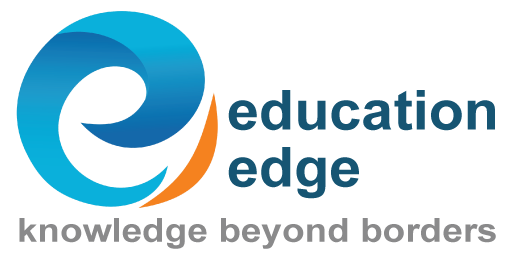Stakeholder Knowledge Area
Project Stakeholder Management includes the processes required to:
· Identify the people, groups or organizations that could impact or be impacted by the project
· To analyze stakeholder expectations and their impact on the project
· To develop appropriate management strategies for effectively engaging stakeholders in project decisions and execution.
Stakeholder management also focuses on continuous communication with stakeholders to understand their needs and expectations.
While some stakeholders may have a limited ability to influence the project, others may have significant influence on the project and its expected outcomes.
The knowledge area of Project Stakeholder Management consists of the following four processes:
|
Process Name
|
Project Management Process Group
|
Key Deliverables
|
|
Identify Stakeholders
|
Initiating
|
Stakeholder Register
|
|
Plan Stakeholder Management
|
Planning
|
Stakeholder Management Plan
|
|
Manage Stakeholder Engagement
|
Executing
|
Issue Log
|
|
Control Stakeholder Engagement
|
Monitoring and Controlling
|
Work Performance Information
Change Requests
|
Identify Stakeholders is the process of identifying the people, groups, or organizations that could impact or be impacted by a decision, activity, or outcome of the project.
Following must be considered while identifying stakeholders:
1. Analyzing and documenting relevant information regarding their interests
2. Level of involvement
3. Interdependencies
4. Influence
5. Potential impact on project success
It is critical for project success to identify the stakeholders early in the project or phase.
The project charter can provide information about internal and external parties related with the project.
Stakeholder analysis is a technique of systematically gathering and analyzing quantitative and qualitative information to determine whose interests should be taken into account throughout the project.
Power/Interest Grid with Stakeholders is used as a tool to identify the strength of a stakeholder.
Stakeholder Register contains all details related to the identified stakeholders.
The stakeholder register should be consulted and updated on a regular basis, as stakeholders may change—or new ones identified—throughout the life cycle of the project.
The Inputs, Tools and Techniques and Output of Identify Stakeholder process are given below:
|
Project Charter
|
Stakeholder Analysis
|
Stakeholder Register
|
|
Procurement Documents
|
Expert Judgment
|
|
|
Enterprise Environmental Factors
|
Meetings
|
|
|
Organizational Process Assets
|
|
|
Plan Stakeholder Managementis the process of developing appropriate management strategies to effectively engage stakeholders throughout the project life cycle
It is based on the analysis of their needs, interests, and potential impact on project success.
The key benefit of this process is that it provides a clear, actionable plan to interact with project stakeholders to support the project’s interests.
Stakeholder management is about creation and maintenance of relationships between the project team and stakeholders, with the aim to satisfy their respective needs and requirements within project boundaries.
The engagement level of the stakeholders can be categorized as unaware, resistant, neutral, supportive, and leading.
The current engagement can be documented using Stakeholders Engagement Assessment Matrix.
The stakeholder management plan is a component of the project management plan and identifies the management strategies required to effectively engage stakeholders.
The Inputs, Tools and Techniques and Output of Plan Stakeholder Management process are given below:
|
Project Management Plan
|
Expert Judgment
|
Stakeholder Management Plan
|
|
Stakeholder Register
|
Meetings
|
Project Documents updates
|
|
Enterprise Environmental Factors
|
Analytical Techniques
|
|
|
Organizational Process Assets
|
|
|
Manage Stakeholder Engagementis the process of communicating and working with stakeholders to meet their needs/expectations, addresses issues as they occur, and foster appropriate stakeholder engagement in project activities throughout the project life cycle.
Managing stakeholder engagement helps to increase the probability of project success by ensuring that stakeholders clearly understand the project goals, objectives, benefits, and risks.
The communications management plan provides guidance and information on managing stakeholder expectations.
A change log is used to document changes that occur during a project.
The Inputs, Tools and Techniques and Output of Manage Stakeholder Engagement process are given below:
|
Stakeholder Management Plan
|
Communication Methods
|
Issue Log
|
|
Communications Management Plan
|
Interpersonal Skills
|
Change Requests
|
|
Change Log
|
Management Skills
|
Project Management Plan Updates
|
|
Organizational Process Assets
|
|
Project Documents updates
|
|
|
|
Organizational Process Assets updates
|
Control Stakeholder Engagementis the process of monitoring overall project stakeholder relationships and adjusting strategies and plans for engaging stakeholders.
Stakeholder engagement activities are included in the stakeholder management plan and are executed during the life cycle of the project.
The Inputs, Tools and Techniques and Output of Control Stakeholder Engagement process are given below:
|
Project Management Plan
|
Information Management Systems
|
Work Performance Information
|
|
Issue Log
|
Expert Judgment
|
Change Requests
|
|
Work Performance Data
|
Meetings
|
Project Management Plan Updates
|
|
Project Documents
|
|
Project Documents updates
|
|
|
|
Organizational Process Assets updates
|







